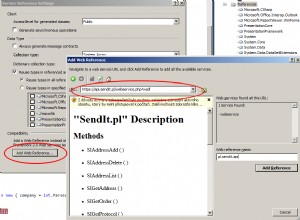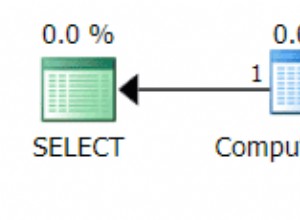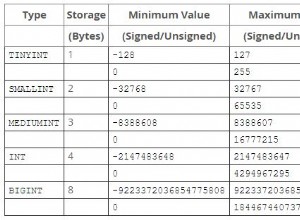Questo è ciò che ho finito per usare per creare una sottodirectory da GetPathLocator() non genererà un nuovo path_locator valore per me - interpreterà solo hierarchyids esistenti .
DECLARE @parentdir table(path hierarchyid not null);
DECLARE @subdir_locator hierarchyid
-- Create Parent Directory, OUTPUT inserted parent path
INSERT INTO FileTable0 (name,is_directory,is_archive)
OUTPUT INSERTED.path_locator into @parentdir
SELECT 'Directory', 1, 0
-- Create new path_locator based upon parent
SELECT @subdir_locator = dbo.GetNewPathLocator(path) from @parentdir
-- Create Subdirectory
INSERT INTO FileTable0 (name,path_locator,is_directory,is_archive)
VALUES ('subdirectory', @subdir_locator, 1, 0);
Il blocco di codice precedente utilizza valore predefinito path_locator trovato qui
che costruisce un nuovo hierarchyid rappresentazione da un GUID (utilizzando newid()
metodo e analisi semplice ). La funzione GetNewPathLocator() non esiste da nessuna parte in SQL Server che potrei trovare (hierarchyid.GetDescendant()
è il più vicino che sono riuscito a trovare, ma non utilizzava la struttura nativa su cui si basa FileTable ). Forse in SQL.NEXT...
CREATE FUNCTION dbo.GetNewPathLocator (@parent hierarchyid = null) RETURNS varchar(max) AS
BEGIN
DECLARE @result varchar(max), @newid uniqueidentifier -- declare new path locator, newid placeholder
SELECT @newid = new_id FROM dbo.getNewID; -- retrieve new GUID
SELECT @result = ISNULL(@parent.ToString(), '/') + -- append parent if present, otherwise assume root
convert(varchar(20), convert(bigint, substring(convert(binary(16), @newid), 1, 6))) + '.' +
convert(varchar(20), convert(bigint, substring(convert(binary(16), @newid), 7, 6))) + '.' +
convert(varchar(20), convert(bigint, substring(convert(binary(16), @newid), 13, 4))) + '/'
RETURN @result -- return new path locator
END
GO
La funzione GetNewPathLocator() richiede anche una vista SQL getNewID per richiedere un newid() utilizzando il trucco da questo post SO
.
create view dbo.getNewID as select newid() as new_id
Per chiamare GetNewPathLocator() , puoi utilizzare il parametro predefinito che genererà un nuovo hierarchyid oppure passa un hiearchyid esistente rappresentazione di stringa (.ToString() ) per creare un hierarchyid figlio come si vede sotto...
SELECT dbo.GetNewPathLocator(DEFAULT); -- returns /260114589149012.132219338860058.565765146/
SELECT dbo.GetNewPathLocator('/260114589149012.132219338860058.565765146/'); -- returns /260114589149012.132219338860058.565765146/141008901849245.92649220230059.752793580/




